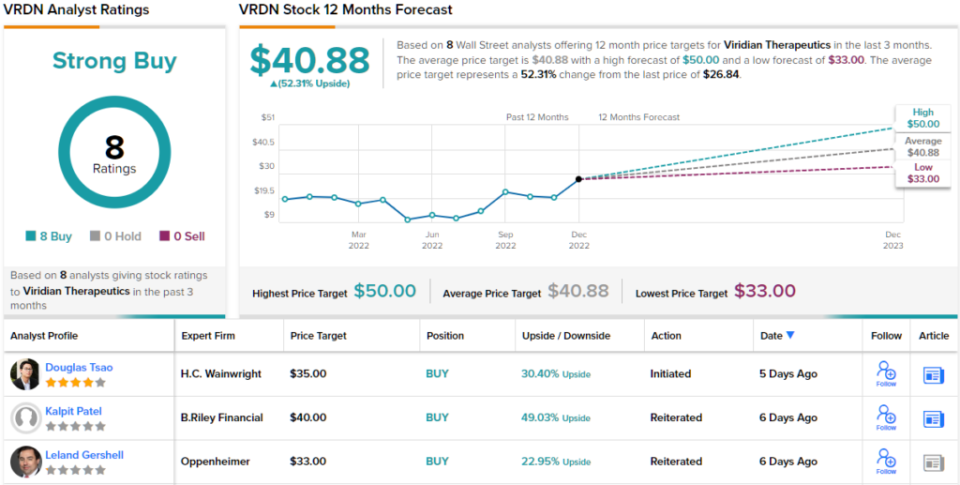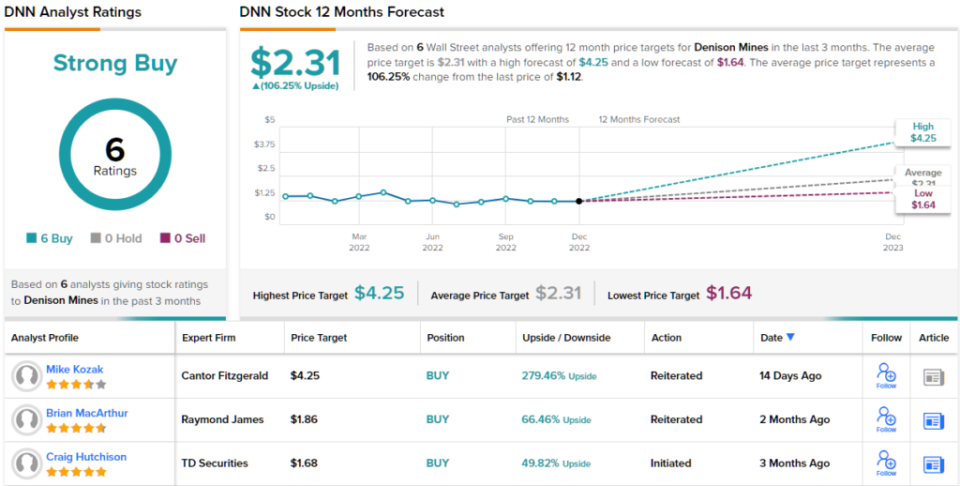
Despite the soft economic backdrop, 2022 has still provided several large-scale takeovers. Microsoft’s acquisition of Activision Blizzard ($68.7 billion – expected to close next year), Broadcom’s of VMWare (~$61 billion – by the end of next year, too) and Oracle’s of Cerner ($28.3 billion), are all notable deals that readily come to mind.
For companies, a lot of the time, larger is preferable; smaller businesses can take advantage of cost-savings that larger organizations have, while bigger entities get access to additional talent that enables them to promote innovative ideas and facilitates further growth. It’s a win-win situation, so long as the acquirer and target are the right fit.
So, with 2023 hovering into view, which companies could be the next takeover targets? Wall Street’s analysts have pinpointed two names that could potentially be next in line for some acquisitive action. We’ve opened the TipRanks database to get a fuller picture of these companies’ prospects. Let’s see what makes these names red-hot takeover candidates right now.
Viridian Therapeutics (VRDN)
We’ll start with Viridian Therapeutics, a biotech company developing therapies for patients suffering from TED (thyroid eye disease). The company has three programs in various stages of development, the most advanced of these is for VRDN-001, an anti-insulin-like growth factor-1 receptor (IGF-1R) monoclonal antibody.
Midway through last month, the company announced positive top-line clinical data from the first two cohorts in the ongoing Phase 1/2 clinical study of VRDN-001, which showed most patients exhibited significant improvements in proptosis and clinical activity score, and complete resolution of diplopia following just two infusions of VRDN-001. The initial data also implies a lengthened duration of benefit. Results from the third cohort should see the light of day in early January 2023.
The company has also initiated a global Phase 3 study (THRIVE) of VRDN-001, with the first patient anticipated to be enrolled in December, and a data readout expected by mid-2024.
So, where does the takeover chat come from? Well, there seems to be lots of interest recently in Horizon Therapeutics, a company whose which lead product Tepezza is already approved for thyroid eye disease (TED) and is on course to clock sales of ~$2 billion in 2022.
While like Tepezza, VRDN-001 is administered intravenously, Oppenheimer analyst Leland Gershell believes the drug has shown potential for “more rapid clinical improvement, shorter infusions, and an accelerated treatment course.”
Gershell also believes the interest shown in Horizon “signals the attractiveness of (and industry conviction in) the TED market’s growth prospects, and may bring VRDN closer to a potential takeout—whether by one of the suitors in discussions with HZNP (AMGN, SNY) or another company.”
What’s more, adds the analyst, VRDN shares still trade at a “small fraction of HZNP’s valuation.”
All told, then, Gershell rates VRDN shares an Outperform (i.e. Buy), while his $33 price target makes room for one-year growth of 23%. (To watch Gershell’s track record, click here)
Viridian gets the Street’s full backing; the stock has garnered Buys only – 8, in total, which all coalesce to a Strong Buy consensus rating. The average target is more bullish than Gershell will allow; at $40.88, the figure suggests shares will climb ~52% higher in the year ahead. (See VRDN stock forecast on TipRanks)
Denison Mines (DNN)
The next M&A candidate we’ll look at is Denison Mines, a uranium exploration and development company. Its interests mainly lie in the Athabasca Basin region in the Canadian Prairie province of northern Saskatchewan.
In addition to owning a post-closure mine maintenance business and a share in the McClean Lake Uranium Mill, one of the biggest uranium processing facilities in the world, the company also has a sizable collection of properties, of which the majority are still in the early stages of exploration.
However, most of the company’s worth is primarily derived from just two assets. One is from the few million pounds of U3O8 Denison purchased for significantly less money than what spot uranium is currently going for. The second is its Wheeler River Project, which Denison is actively developing and where it intends to apply in situ recovery (“ISR”) techniques to extract very affordable uranium.
The Wheeler River Uranium Project, the largest undeveloped uranium project in the eastern, highly developed Athabasca Basin region of northern Saskatchewan, is owned by Denison with an effective 95% stake. It is this project which Cantor analyst Mike Kozak believe makes Denison an attractive takeover proposition, though that is not the only reason to get behind the company.
“Given the Tier One status of the Wheeler River project, its top spot on the list of potential takeover candidates in the uranium sector, and the Company’s balance sheet which is fully cashed-up through to construction, Denison should be a core holding for any/all institutional investors with a uranium focus, energy allocation, or Environmental, Social, and Governance (ESG) criteria,” Kozak explained. “The Company remains our preferred uranium developer.”
Kozak is not messing about in his recommendation; along with a Buy rating, his Street-high price target of $4.25 suggests DNN shares are currently undervalued to the tune of 279%. (To watch Kozak’s track record, click here)
Some stocks make a roundly positive impression on Wall Street’s analysts, and Denison is one of those. This uranium stock has a unanimous Strong Buy consensus rating, based on 6 recent positive reviews. The shares are priced at $1.12 and the average price target of $2.31 gives the shares ~106% upside potential for the next 12 months. (See DNN stock forecast on TipRanks)
To find good ideas for stocks trading at attractive valuations, visit TipRanks’ Best Stocks to Buy, a newly launched tool that unites all of TipRanks’ equity insights.
Disclaimer: The opinions expressed in this article are solely those of the featured analyst. The content is intended to be used for informational purposes only. It is very important to do your own analysis before making any investment.

